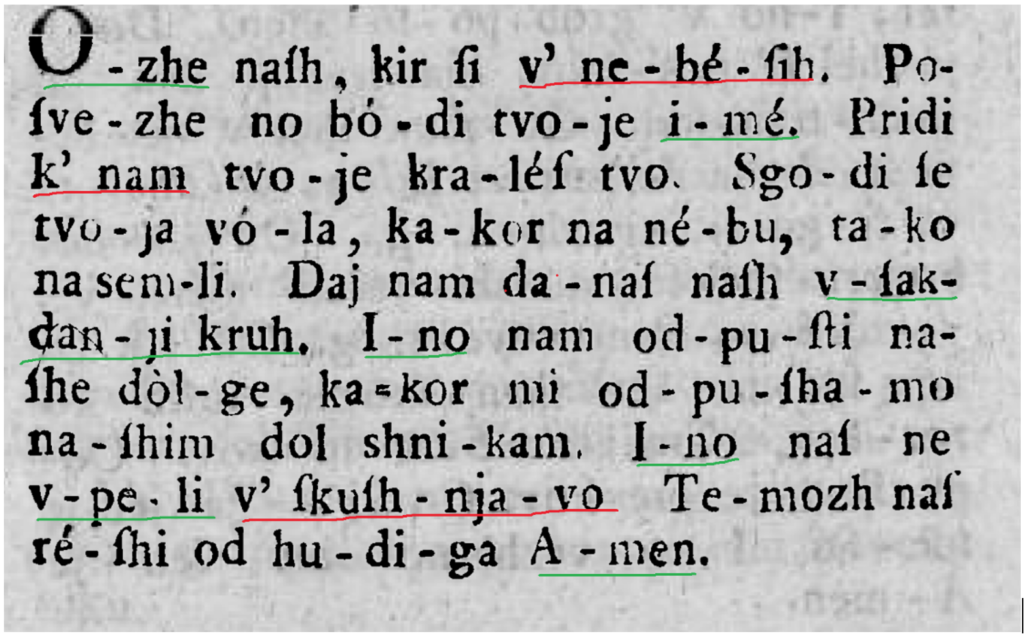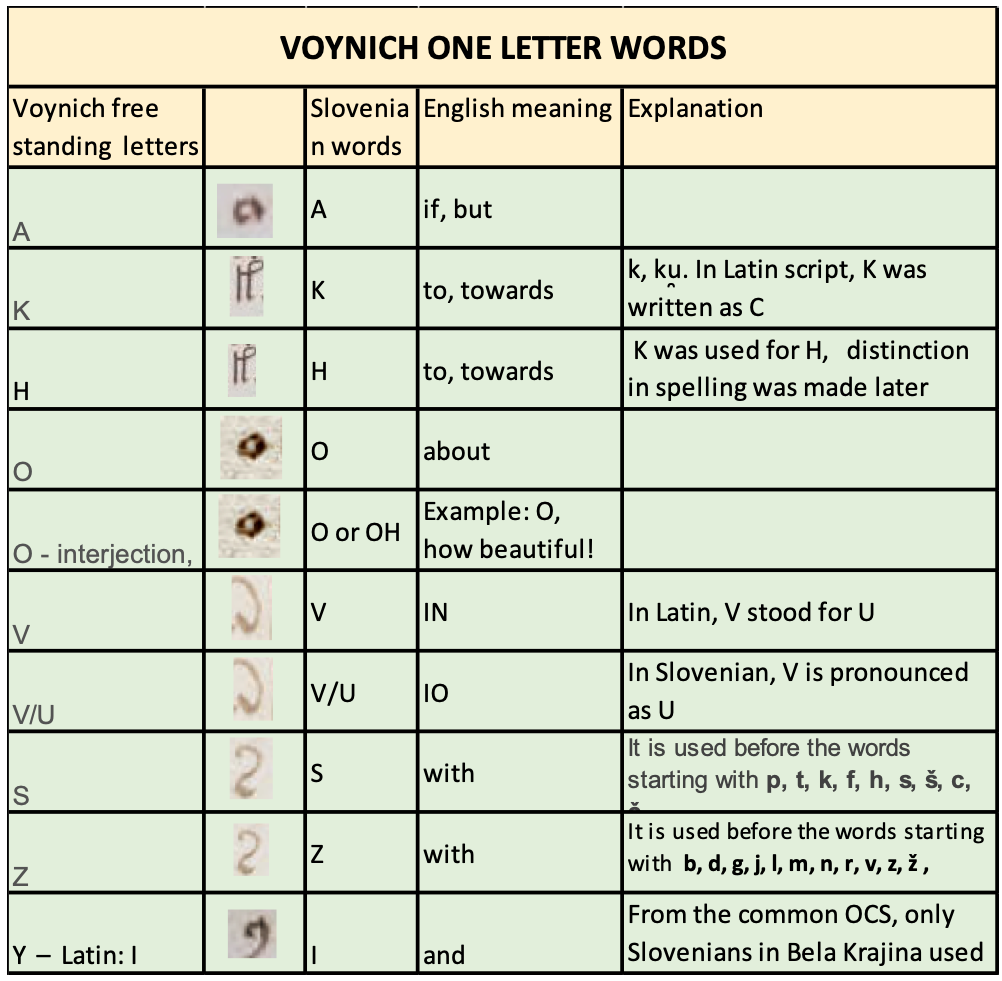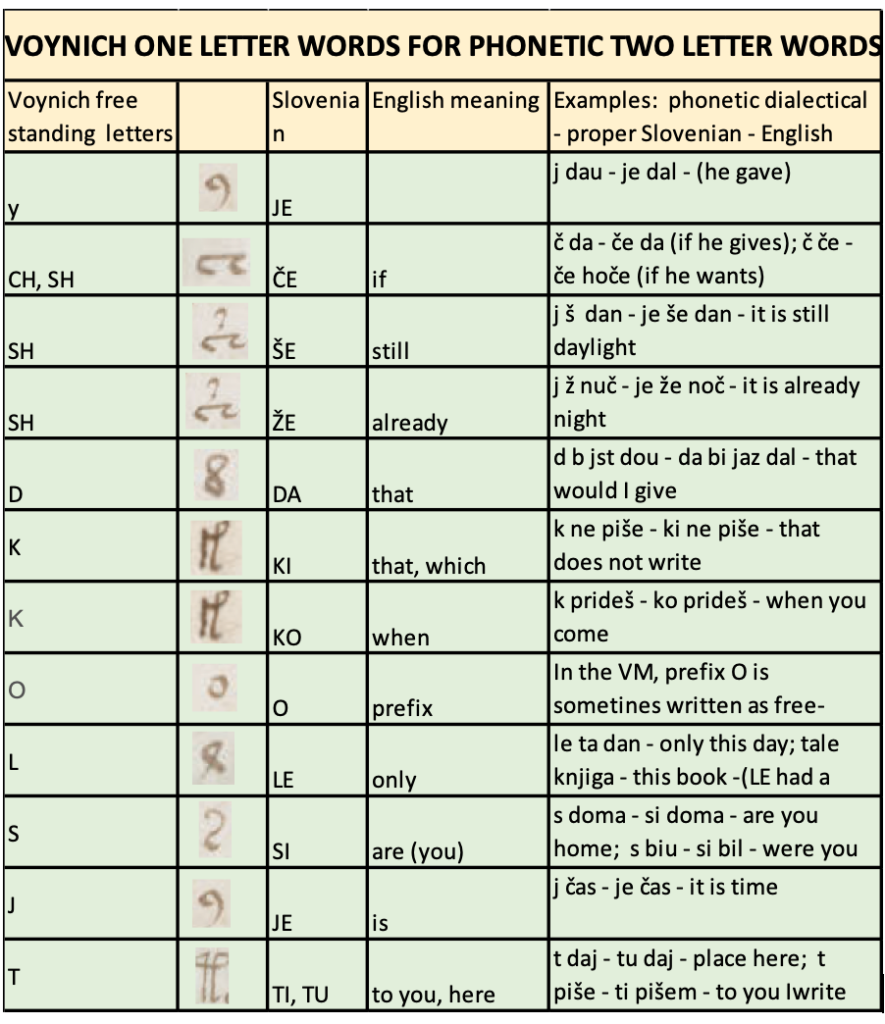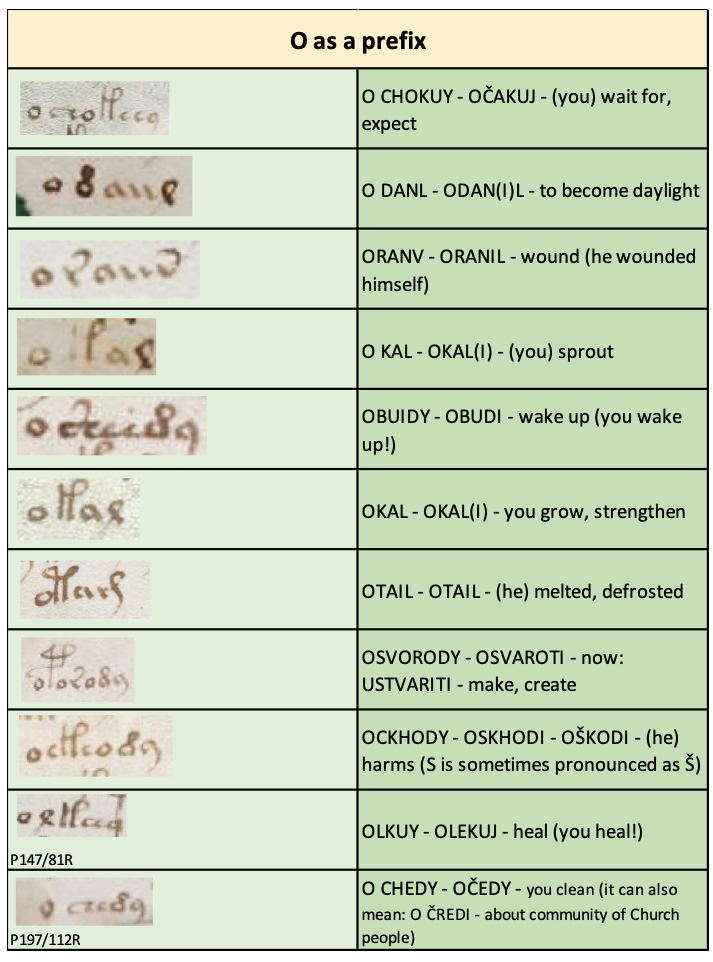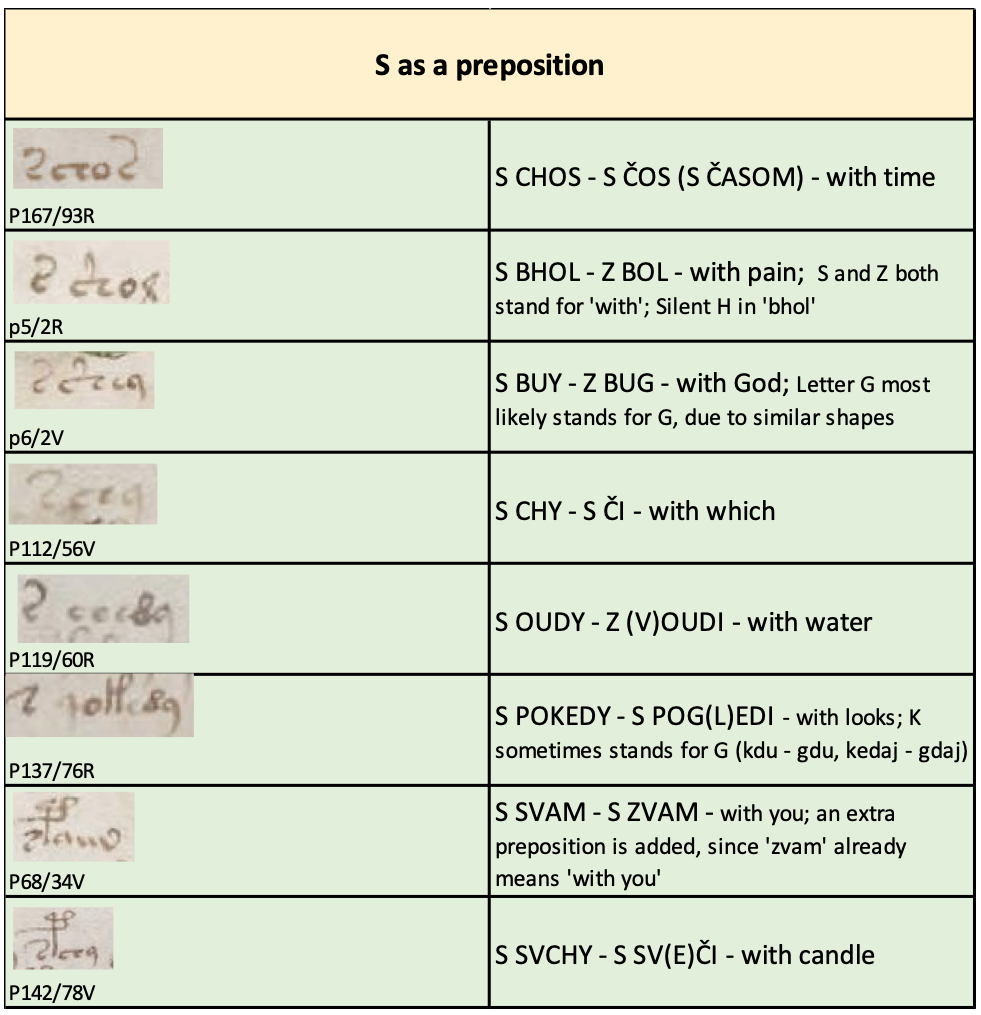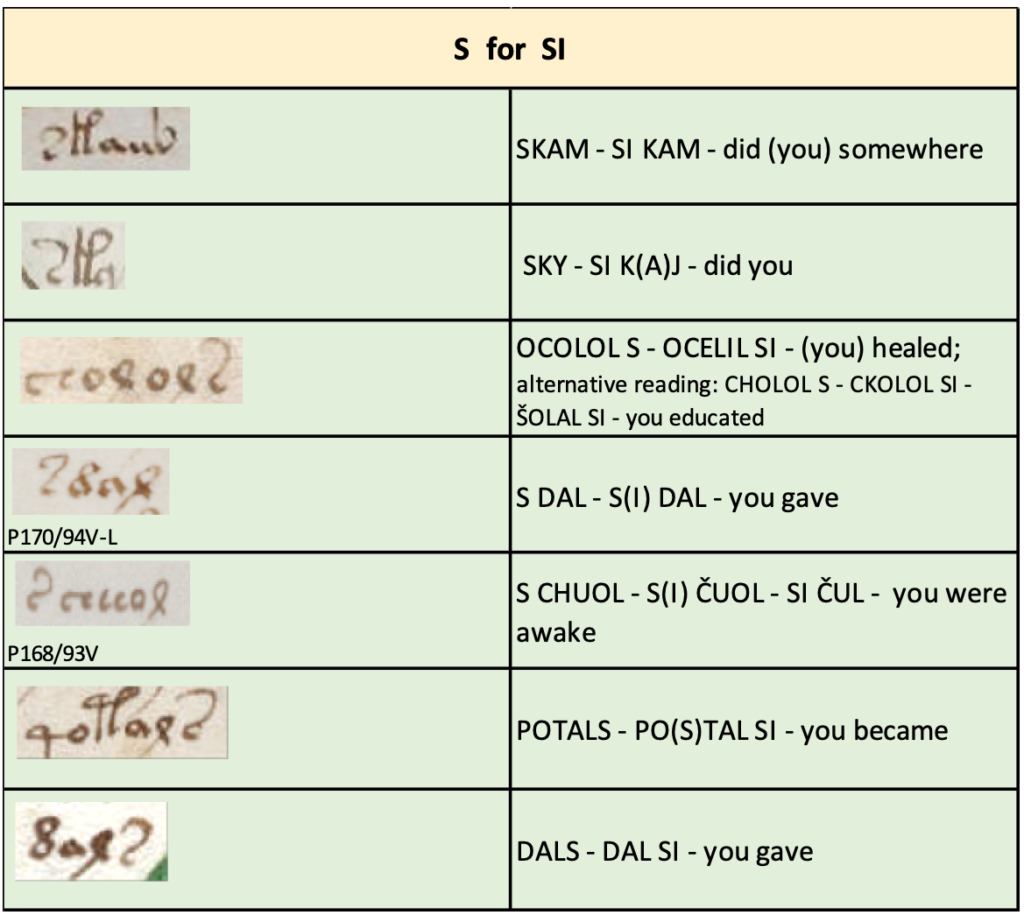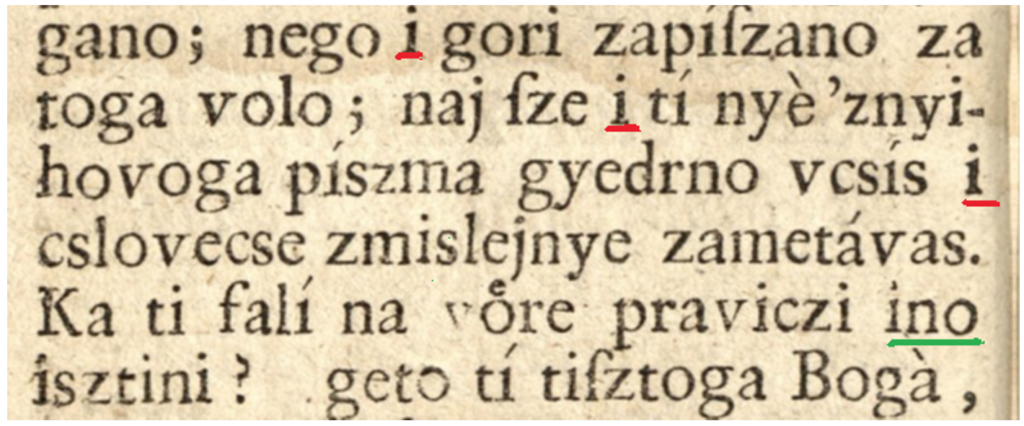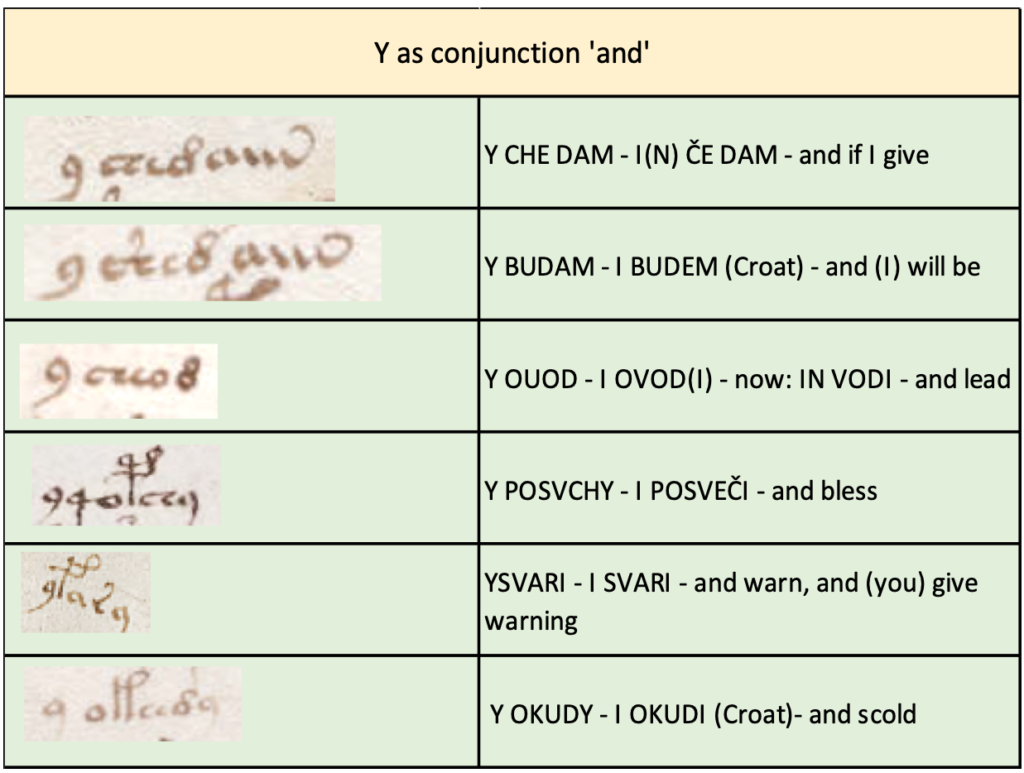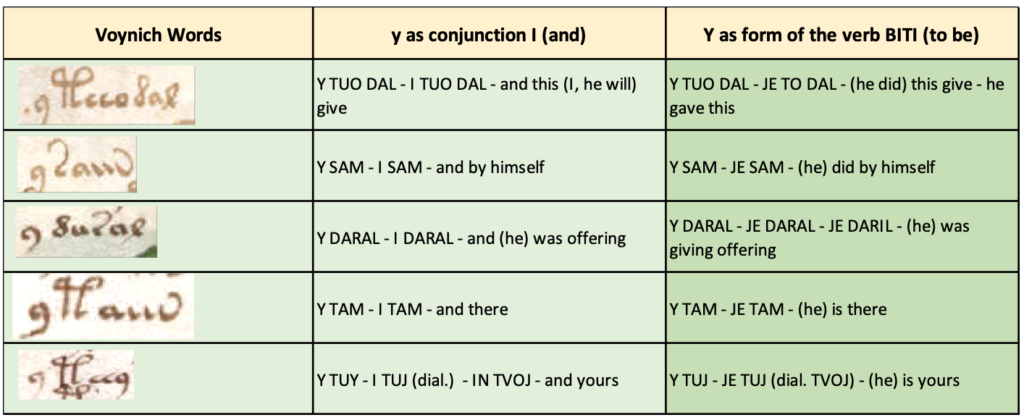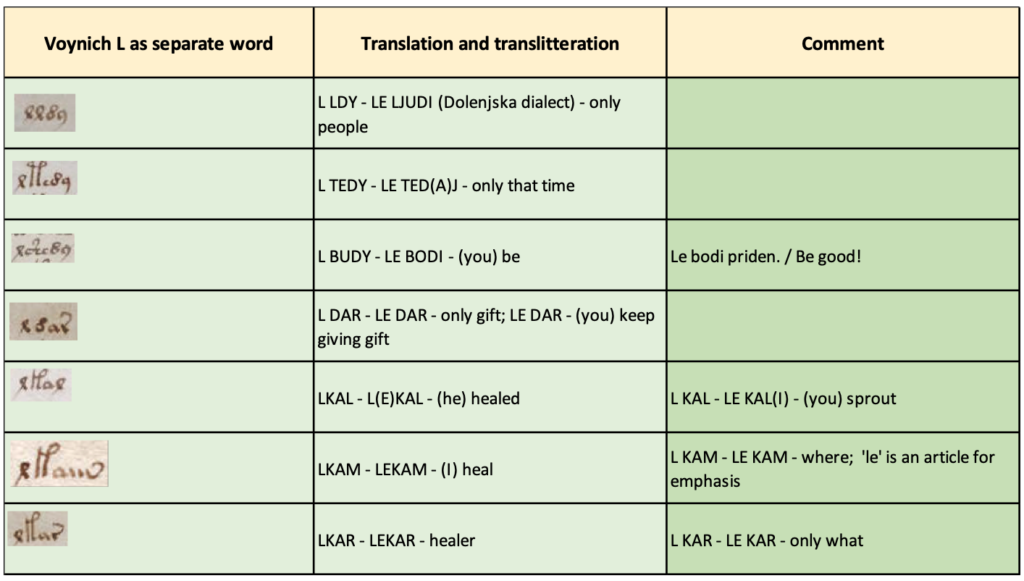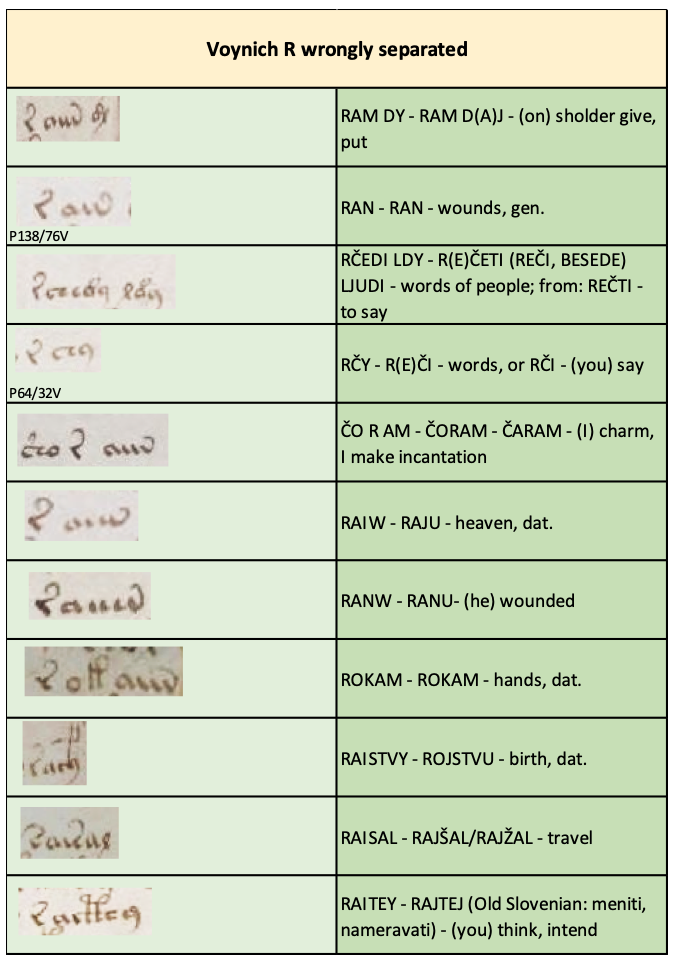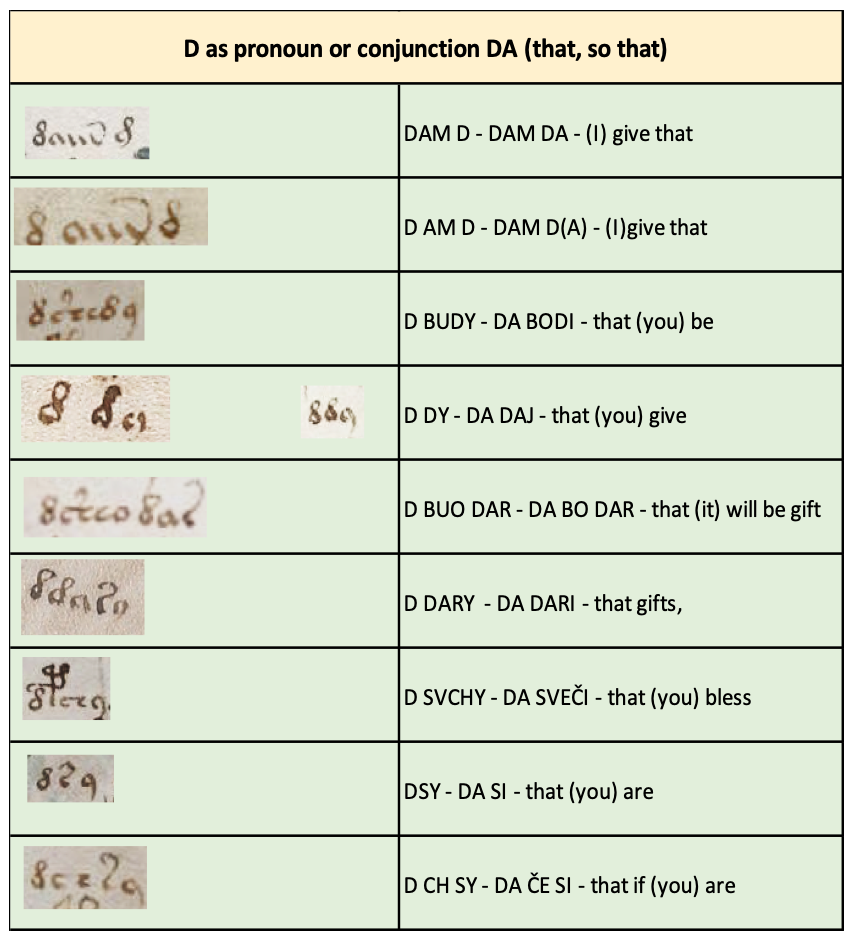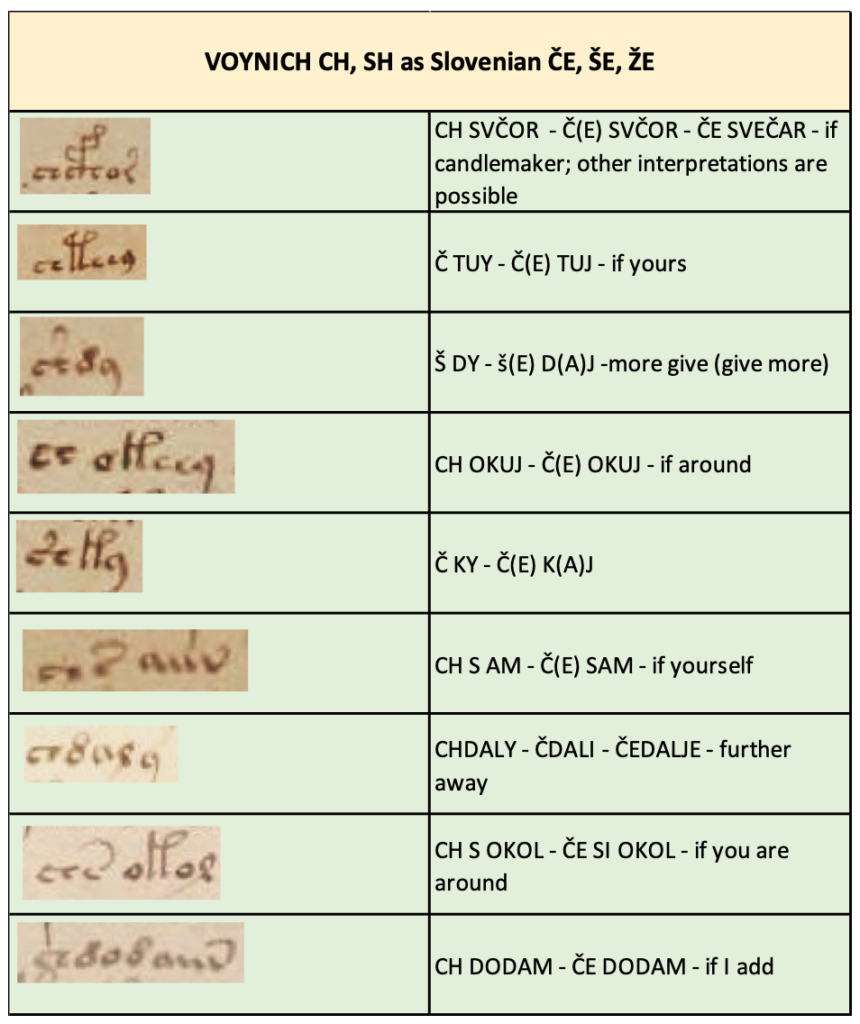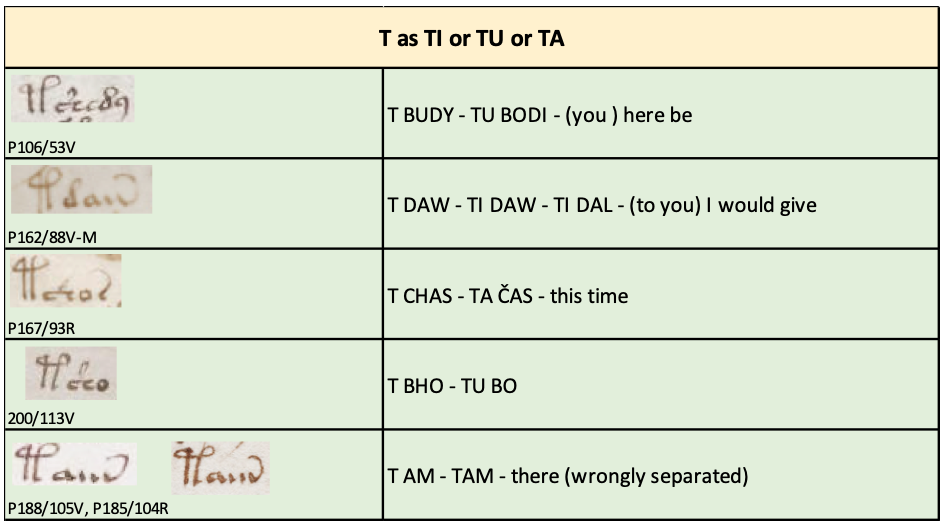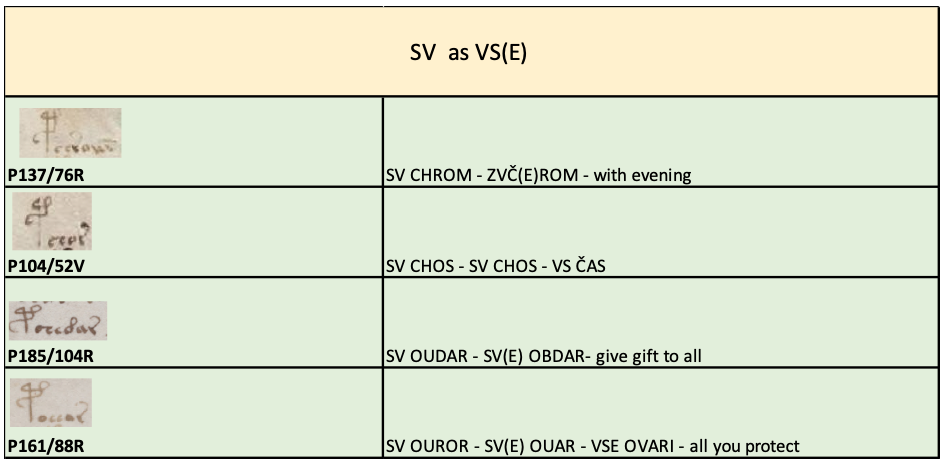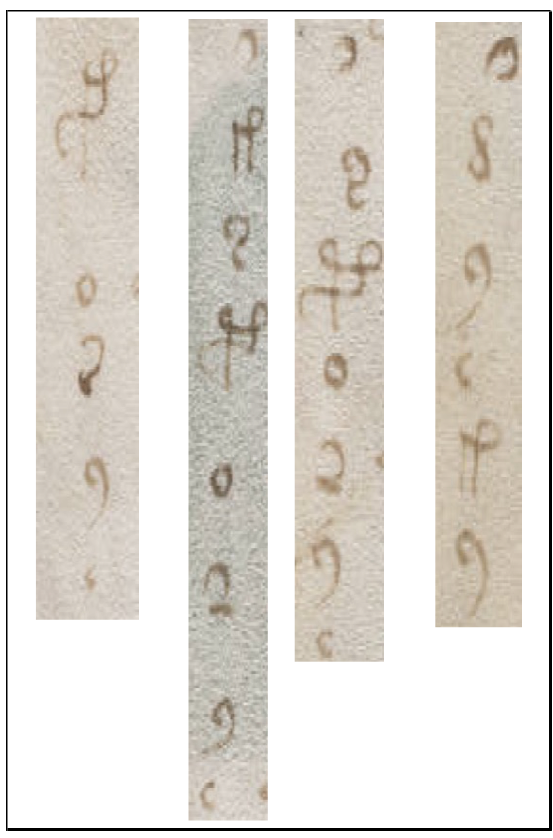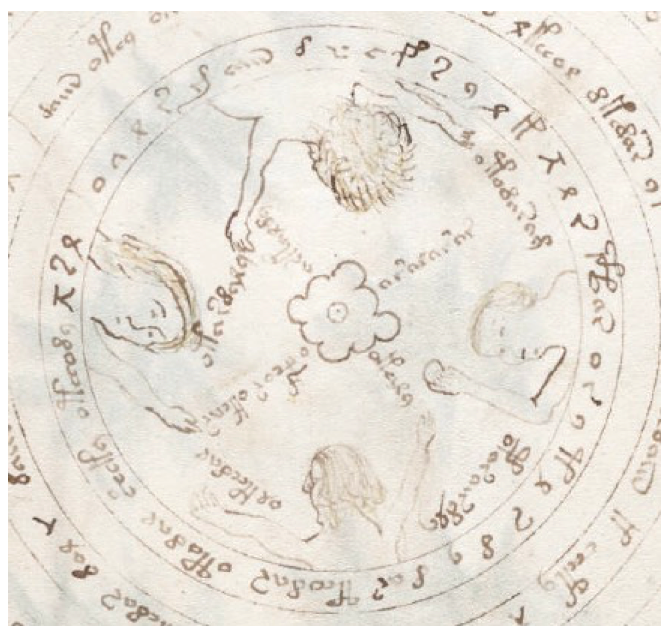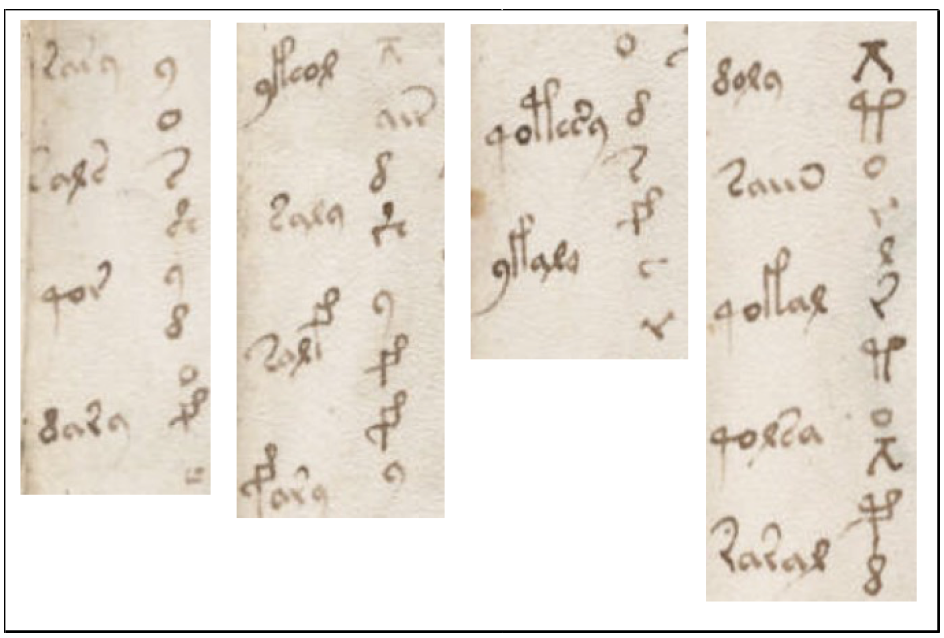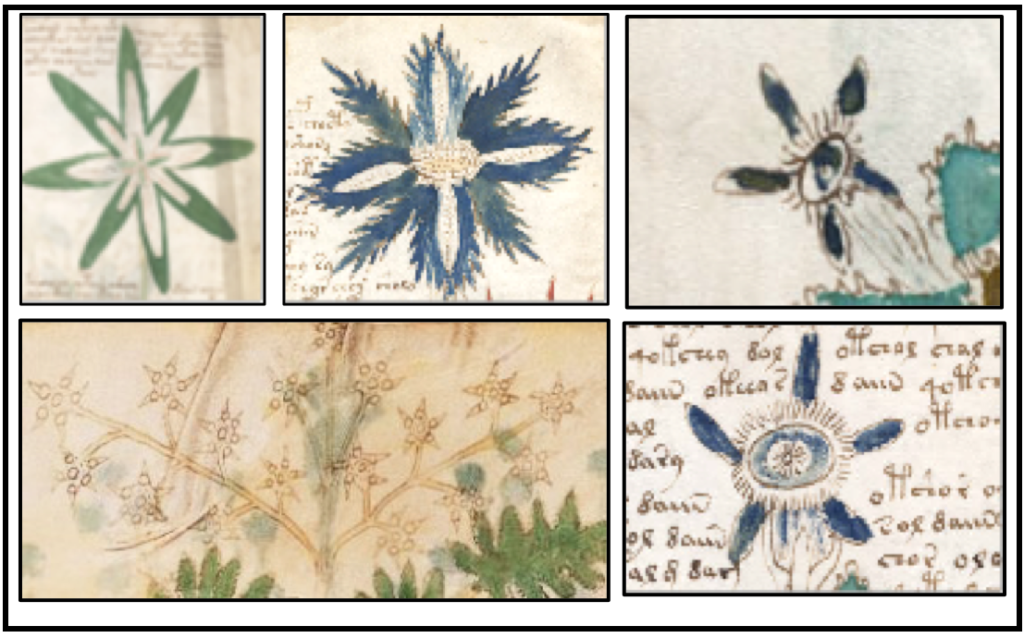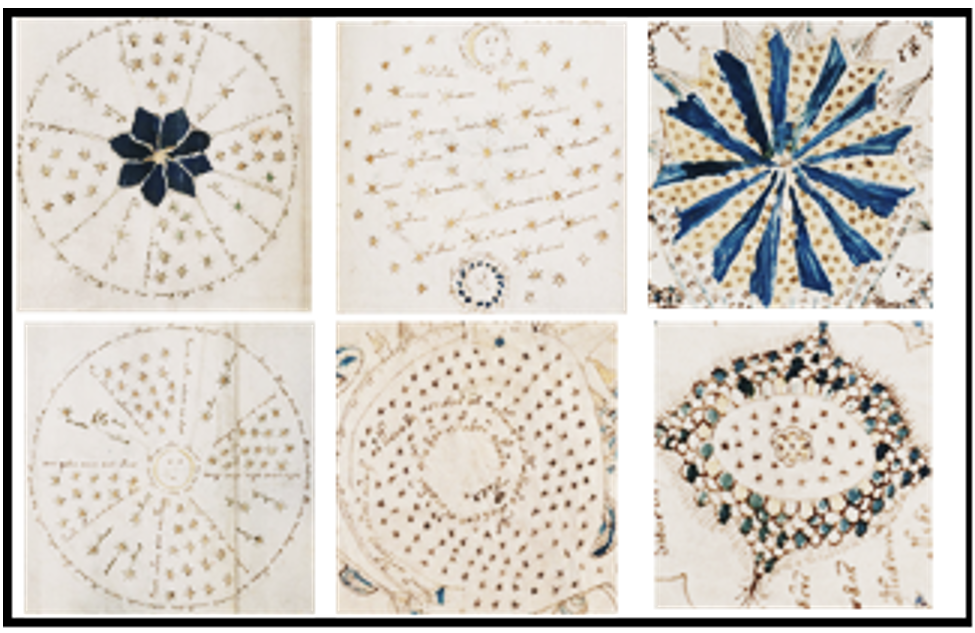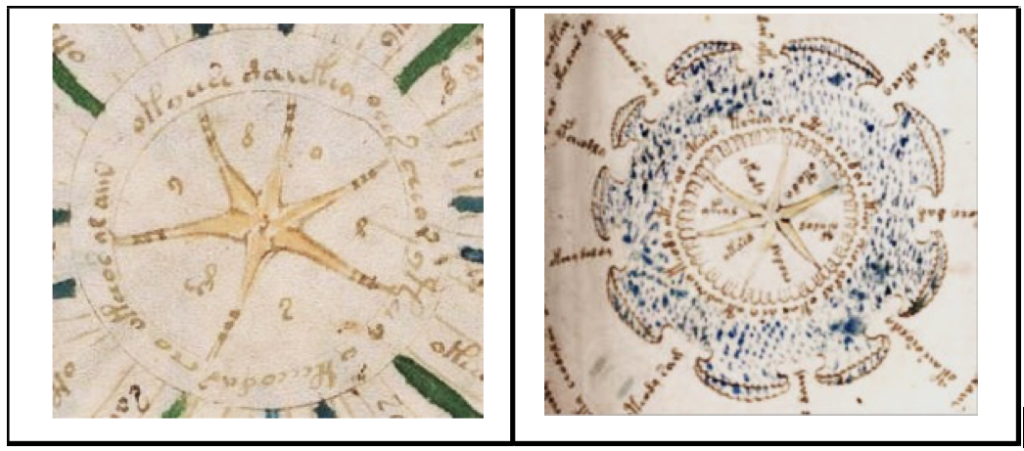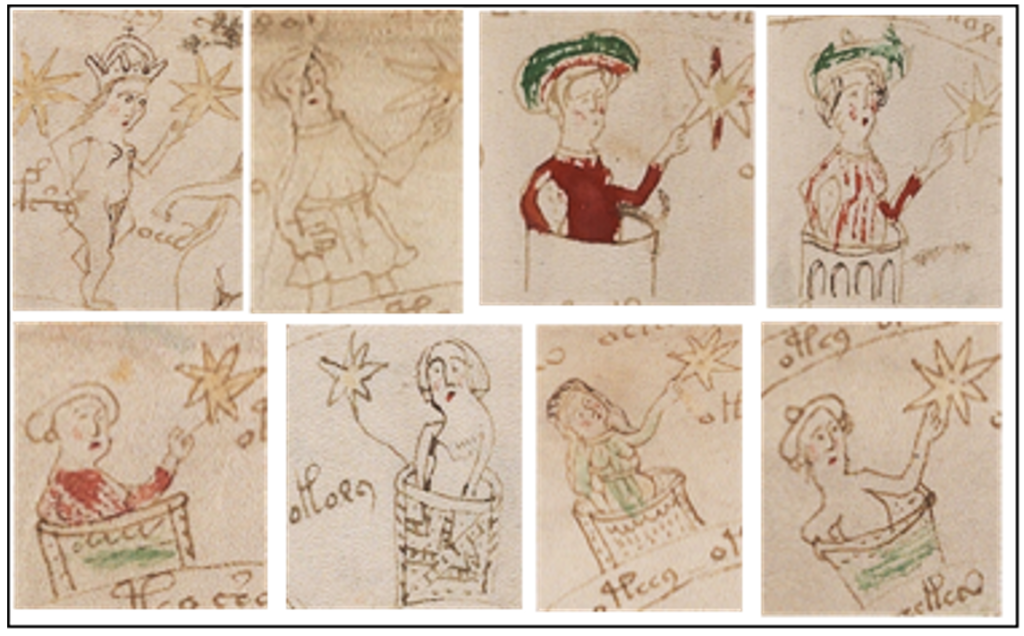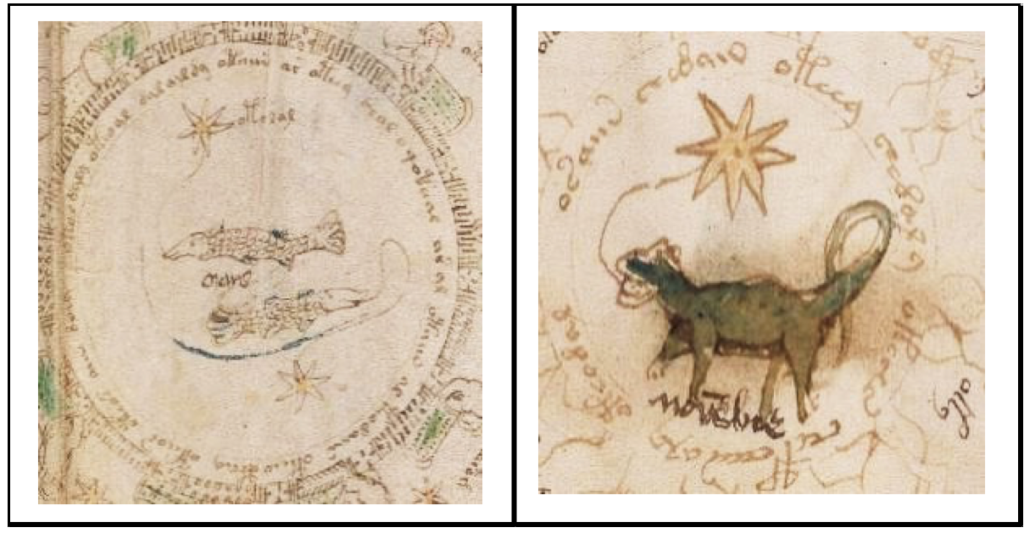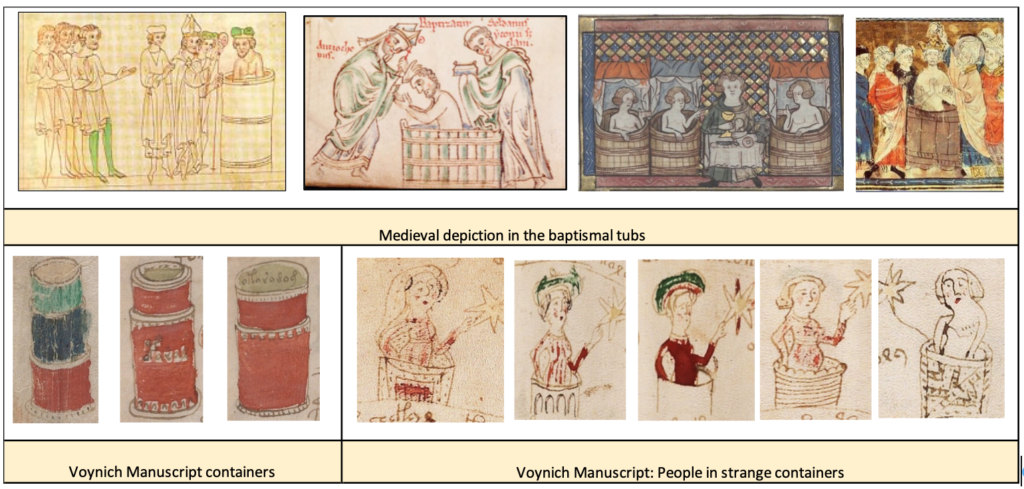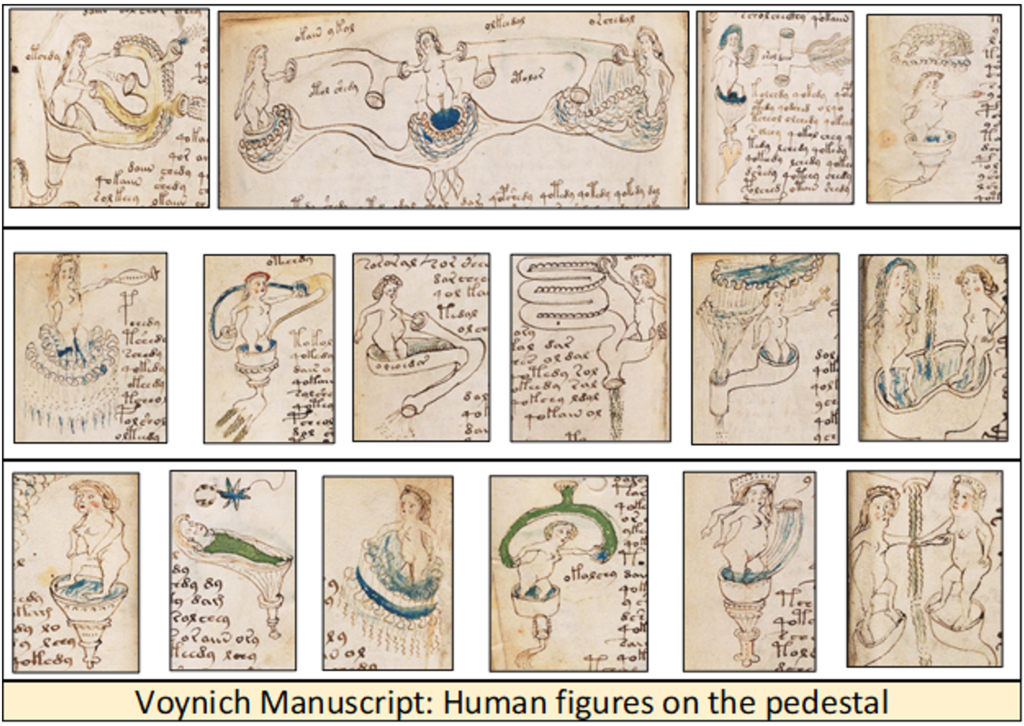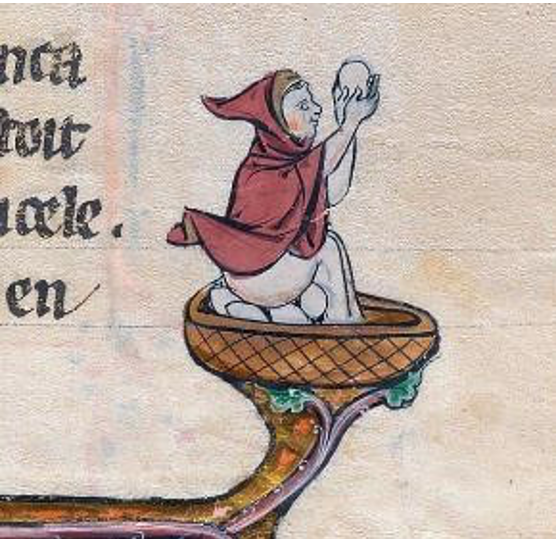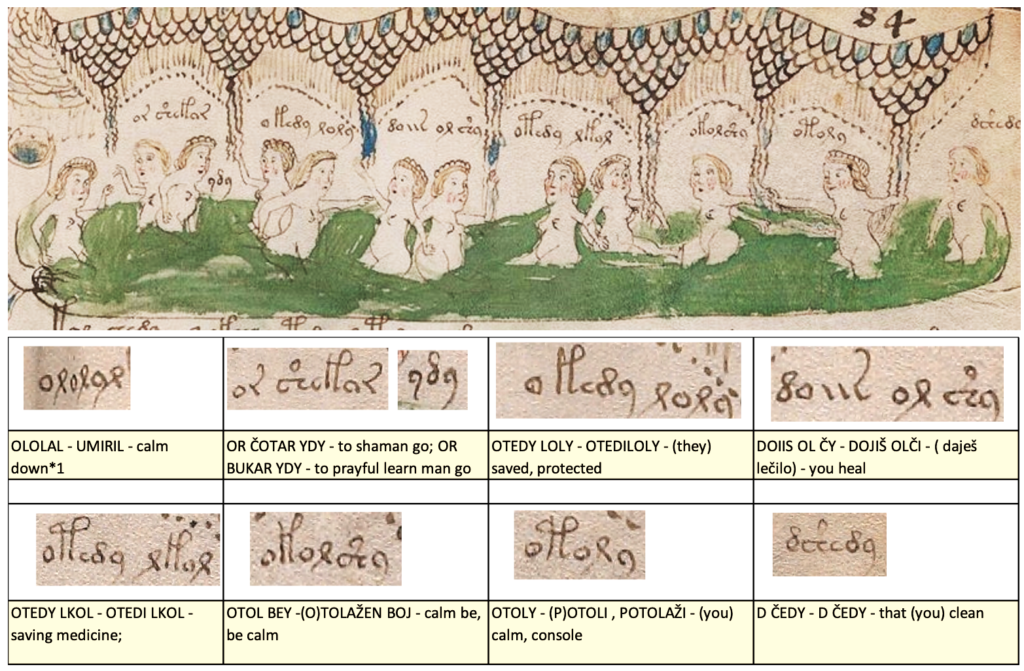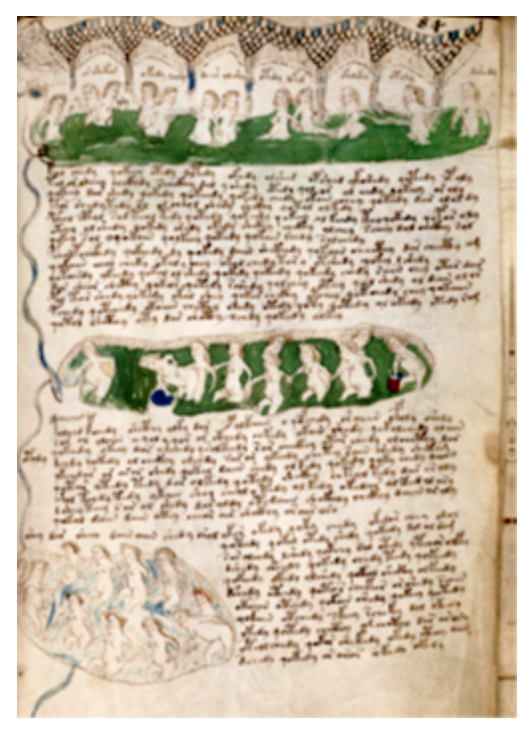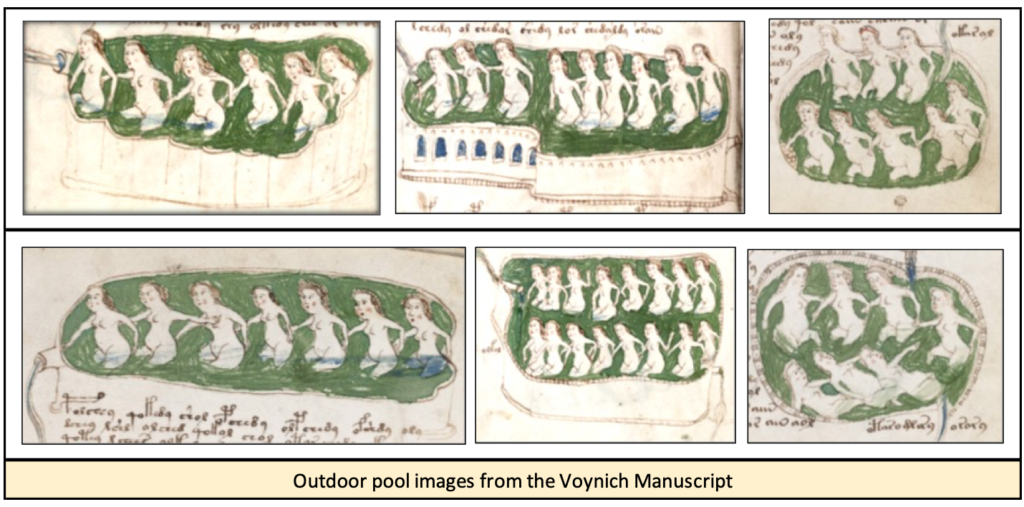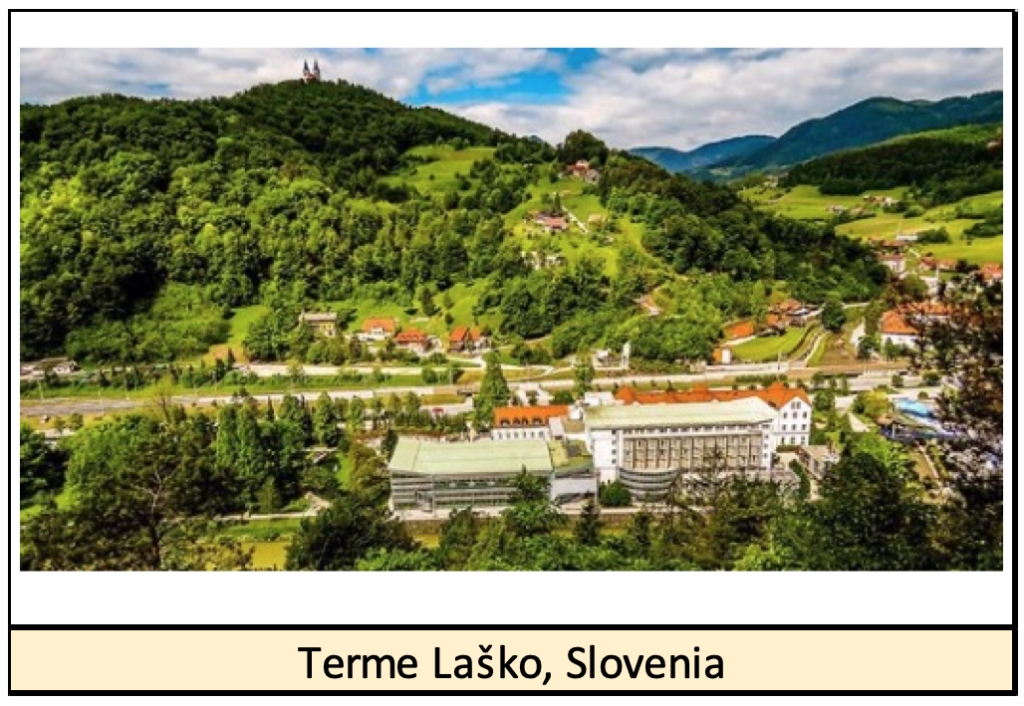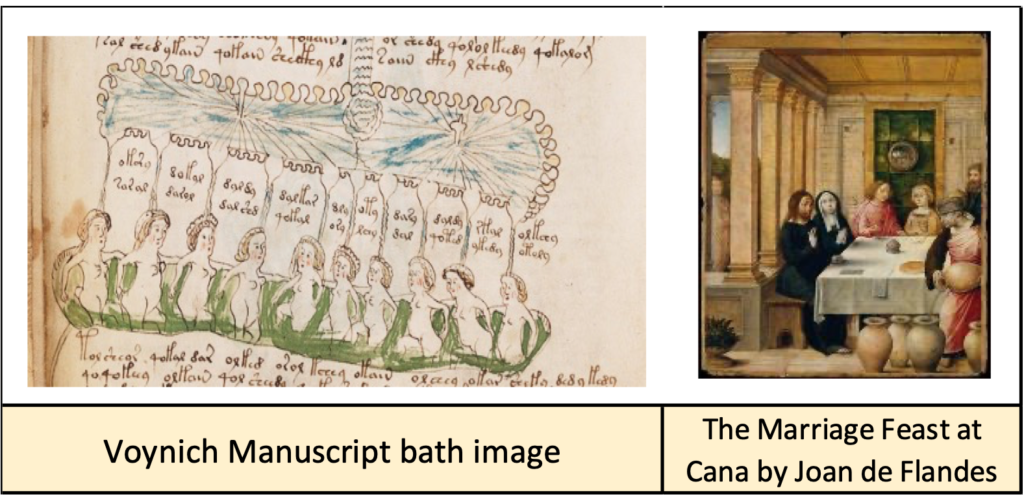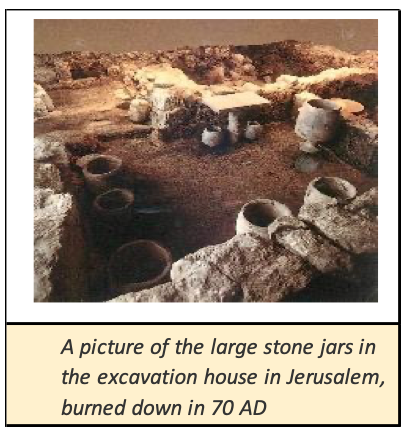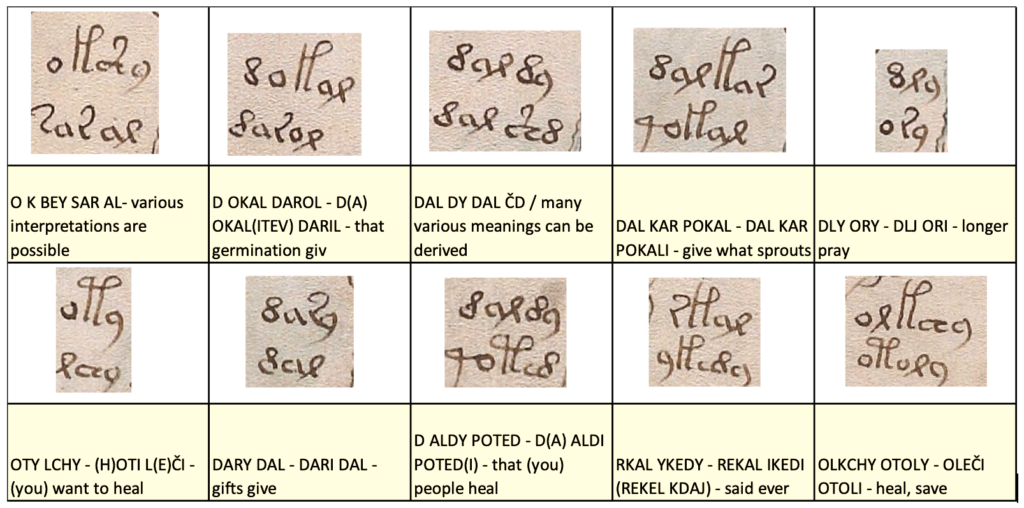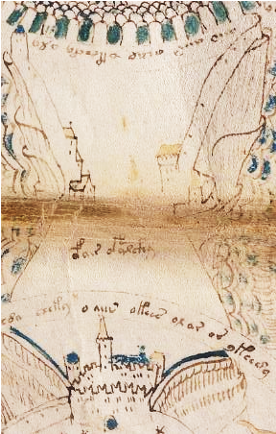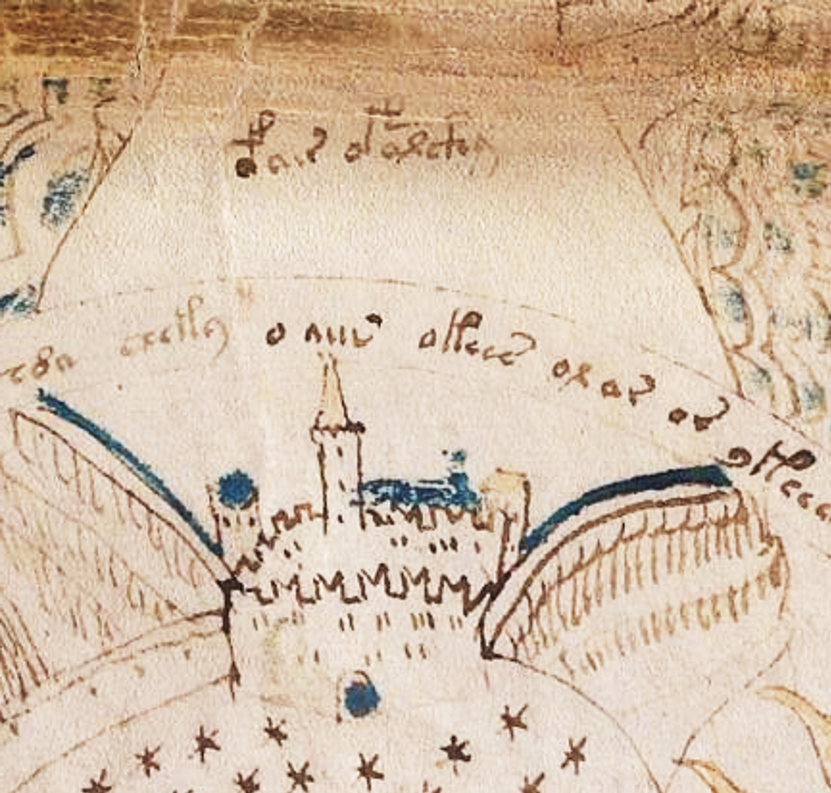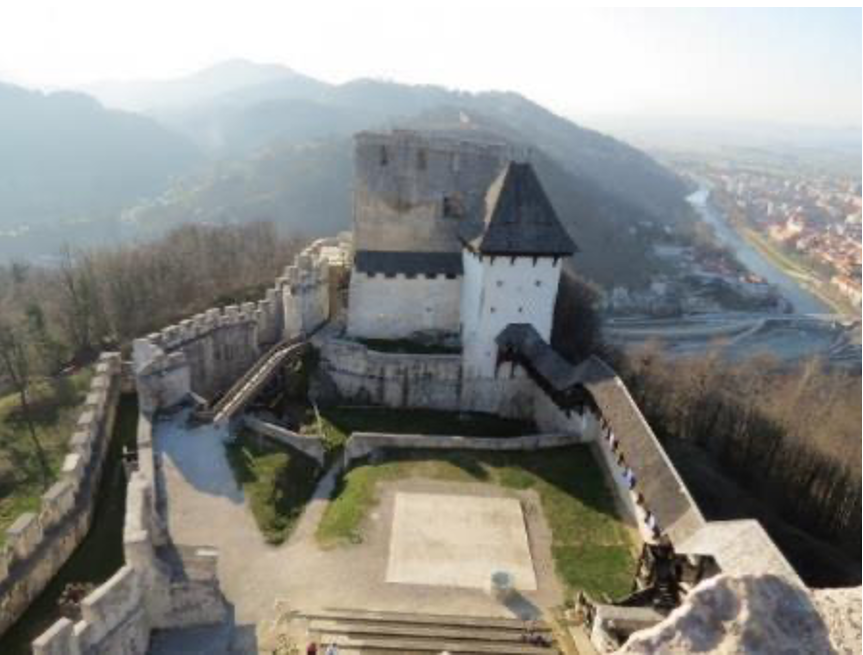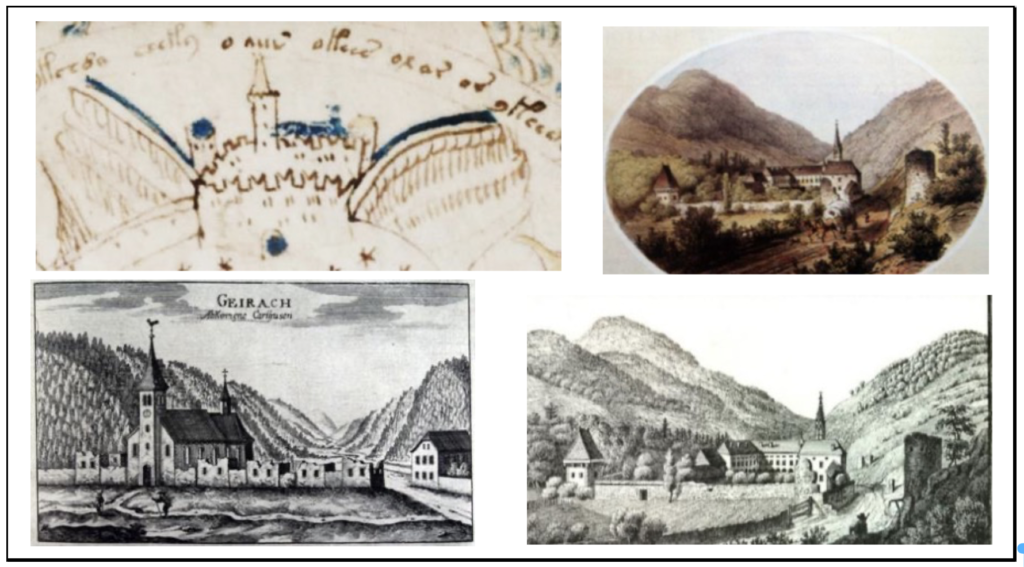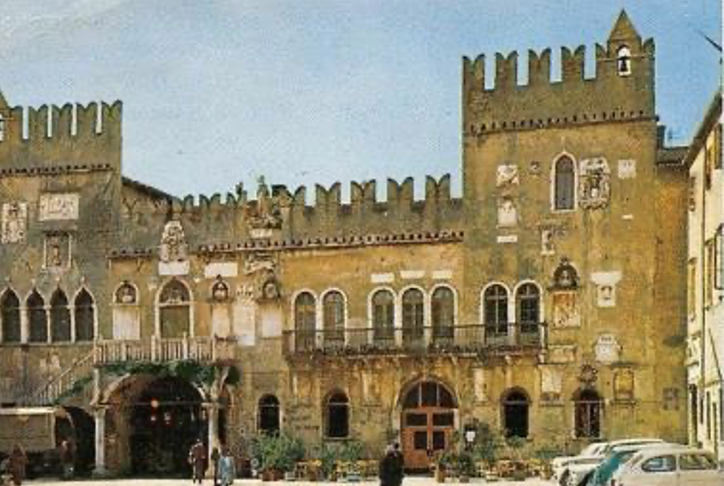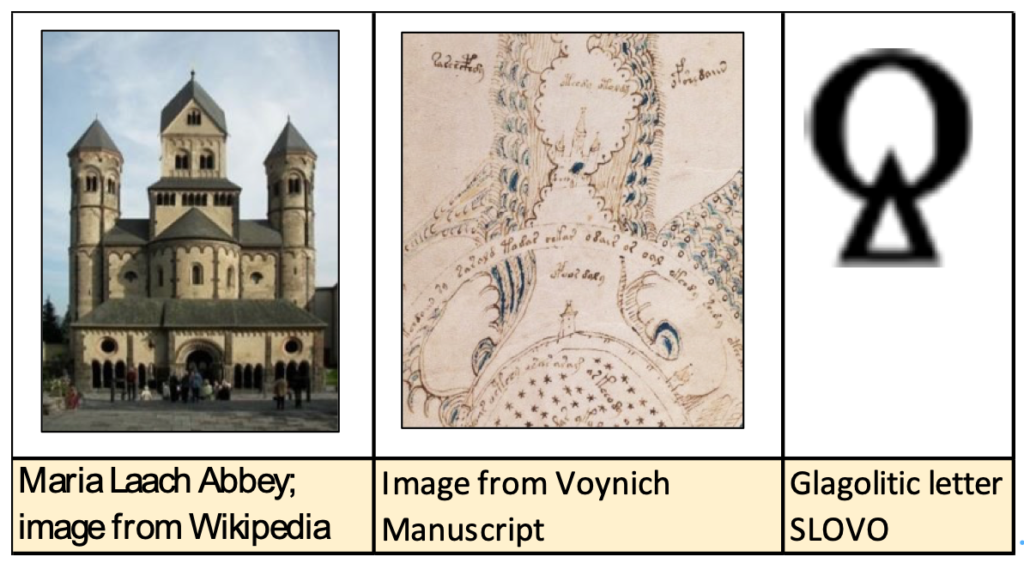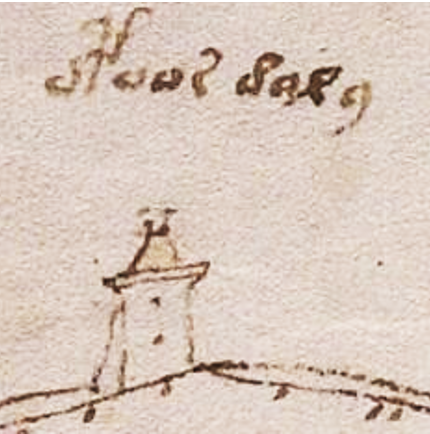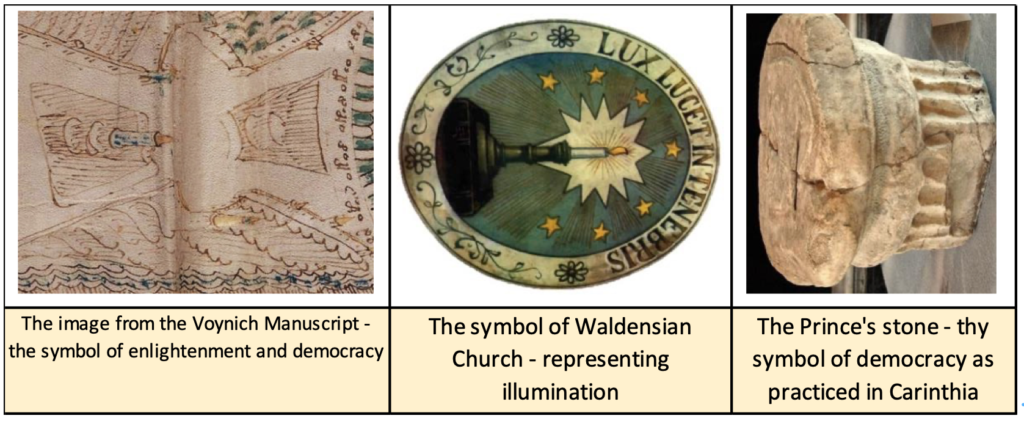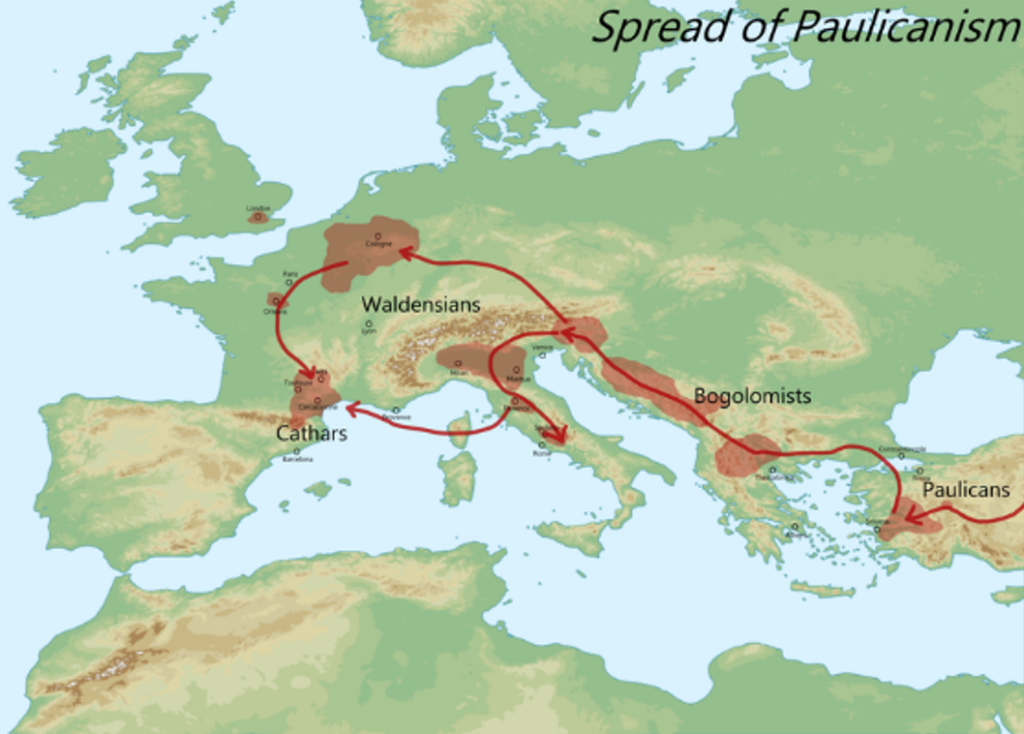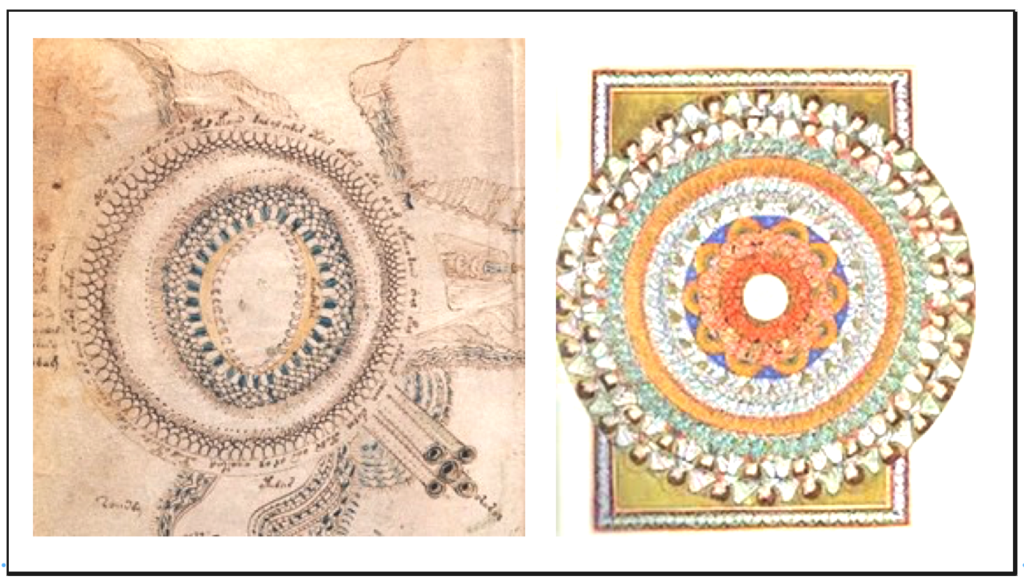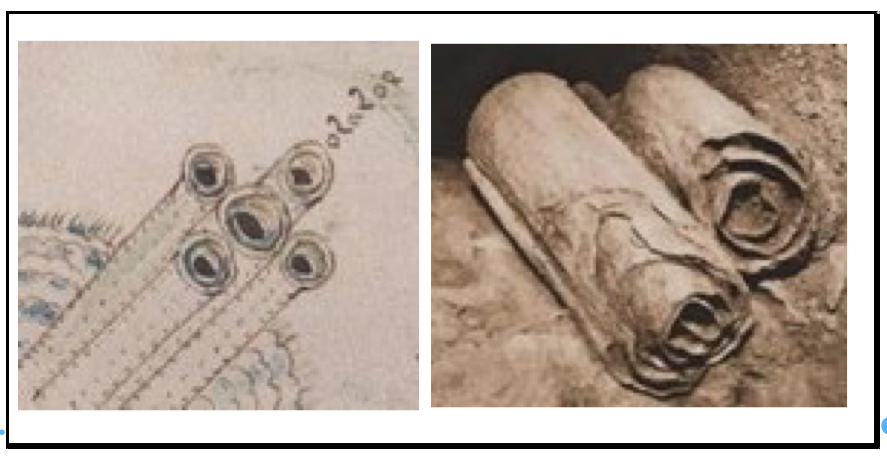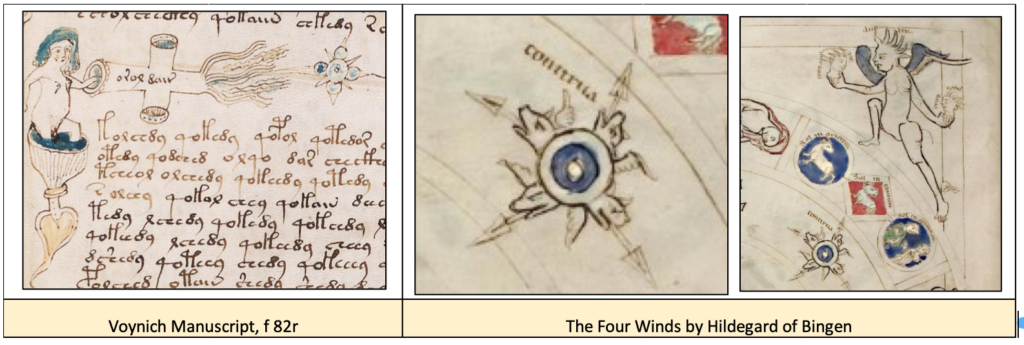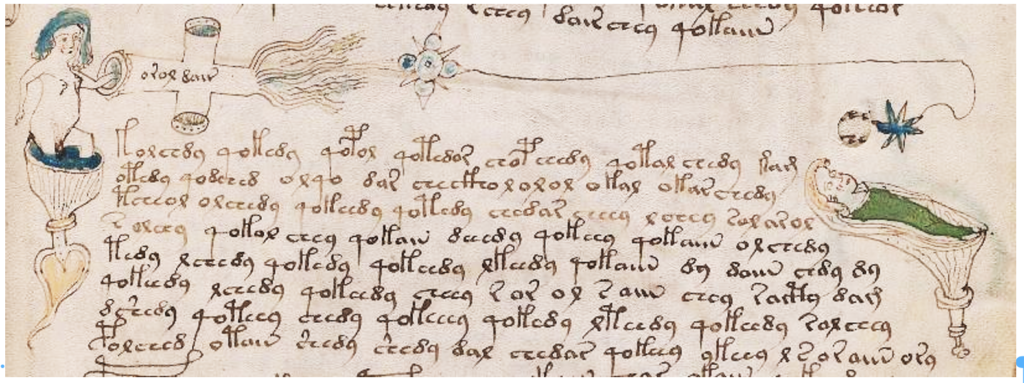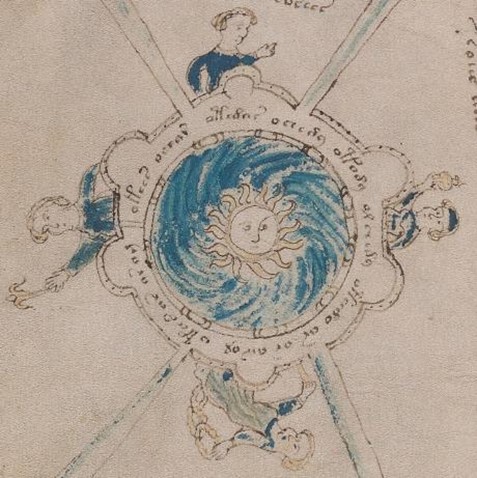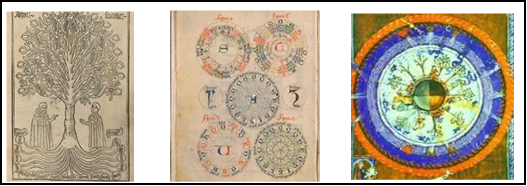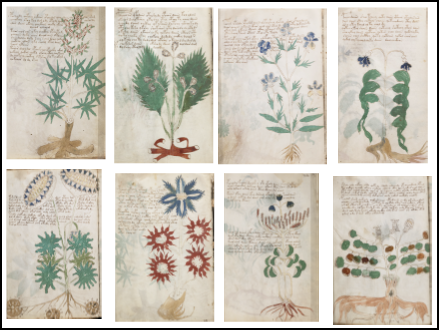Many pages in the VM are devoted to public and private baths. The physical cleaning associated with such places could also be an allusion to the spiritual cleansing. The images of naked women, bathing in the tubs on pedestals, are a clear indication that a realistic interpretation of the pictures in some cases is impossible. The author of the VM seems to be preoccupied with the notion of spiritual purifications. Judging from his works, the same can be said for Nicholas Kempf. There are many mystics and psychologists who claim that spiritual cleansing (introspection) is a prerequisite for genuine mystical experience.
The worship of water started spontaneously and became gradually incorporated in religious rituals. Water can be considered the most mysterious of the elements. It can be found as a vapor, a liquid, or a solid material. It comes from above (as rain) and from below (as spring water).
The word OLOLAL has no meaning in Slovenian, which means that it was borrowed, most likely from Dutch where it meant ‘mumble’, ‘mutter’ prayers and hymns. In the 14th century, it was applied to members of semi-monastic reforming sects active in Low Countries who devoted themselves to the care of the poor and sick. Lolleard (Lollards in English) were regarded heretics by the Roman Church.
The word TEDY frequently appears in the VM. Although it could be understood as Slovenian word TED(A)J (then), this is not always the case. From the context of the text, I had concluded that this word is related to Slovenian word OTETI, since occasionally the letter D was used for the sound T. OTETI in Slovenian means ‘save’, ‘protect’. Assuming the author of the VM had borrowed it from another language, close to English, I discovered its origin might be Dutch ‘tijdig’ or Danish ‘tidig’ (timely) or Old English ‘tidlic’ (timely, seasonable). According to the Etymology online, the word ‘tedy’ meant in mid-13th century ‘in good condition healthy’. Some etymologists relate this word with ‘timely’ (zitig, or zeitig in German), which could also be related to Slovenian slang word ‘pocajtati’ (heal, feel better). It is possible that people understood wintertime as a time of ill health since poor died and cold contributed to their feeling.
The Slovenian word OTETI is explained in the Slovenian Etymological Dictionary as follows:
OTETI therefore means ‘take away’ and implies ‘take away what is bad, harmful, save from pain, illness, harm. In the Slovenian Etymology Dictionary, it is explained as Lat. ‘liberare’. It was first attested in the 10th century, which means that there might be some similarity with the English ‘tidy’, particularly since the dialectical pronunciation of ‘oteti’ could also be ‘otejti’ (T and D were often used interchangeably, due to the similarity of the sound). It also associates it with the Dutch ‘tijdik’, since it implies the restoration to a previous good condition.
Ritualistic Baths
Rituals performed at natural springs and rivers have been in practice for thousands of years, in many lands, and in many religions.
The Jews were very particular about their ritual baths. No less than 60 gallons of water was to be used, thus ensuring total bodily immersion. The water had to be “living” water, meaning that it was directly sourced from a river or spring, or from rainwater that flowed into the pool. A mikveh (the Jewish ritual bath) dating from 1170, was discovered in Cologne, German.
The bathing rituals were often associated with the summer solstice. This event had strong associations with mysticism and ritual cleansing in many cultures.
It was believed that on the nights of June 23 and June 24, natural sources of water were blessed. These included springs, rivers, and fishponds. As people bathed in these waters, they recited incantations asking for health and happiness. The Catholic Church regarded this ritual as Cultura diaboli, and denounced it as a remnant from the past.
In his letter to Cardinal Giovanni Colonna, Petrarca described how he had witnessed this strange ritual in Koln: “The river shore was full of beautiful women, decorated with smelling flowers, washing in the river and reciting a prayer in some unknown language. It was explained as an ancient ritual which was practices to protect the women from all misfortunes in the following year.”
St. Augustine describes a similar ritual he had seen in Lybia, a thousand years earlier. He strongly denounced it.
The three images on f84r that could allude to the ancient ritual of bathing on St. John’s day and chanting the words related to ‘salvation’, ‘protection’. In Christian tradition, this pagan ritual was transformed into the sacrament of baptism, which purifies the sinful souls and enables them God’s protection.
Nicholas Kempf could have illustrated this ritual, assuming that he authored the VM. After all, Kempf was of German origin, and probably knew of the ritual in Koln. He was also quite familiar with works of St. Augustine. The women depicted bathing in pools appear to be wearing flower-garlands on their heads.
In the Roman times, the bathing ritual deviated from its religious roots. It degenerated into a hedonistic and immoral indulgence involving the participants – much to the dismay of St. Augustine!
Saints Clement, St. Jerome, and other early Curch fathers, condemned excessive attendance at the public baths. They particularly targeted mixed-gender bathhouses.
During the medieval times, many Islamic countries re-established Roman type baths. They were known as Turkish baths. It is believed that the use of baths regained popularity in Europe with the return of the Crusaders from the Middle east.
There were public baths already in the territory of present-day Slovenia extending back to Roman times. Most of the buildings were later destroyed. At least two Slovenian hot springs were mentioned in the 13th century.
The hot springs at Dolenjske Toplice are mentioned in 1228. Count Henry IV of Istria donated part of his estate to the Cistercian monastery of Stična.
According to the Chronicle of the Counts of Celje, the prior Nicholas of Jurklošter (Slovenia) bought a house in Laško in 1450. It was also documented that the monks ran public baths in the open swimming pool at Laško. This prior could only have been Nicholas Kempf. Assuming he was the author of the VM, it would explain the numerous pictures of pools of water with females bathing, as well as pictures of man-made pools. They could be sketches for a public swimming pool the monastery was planning to build. They could also reflect on Kempf’s obsession with meditating. In any case, this work on public baths certainly prompts the consideration of many ideas about the meaning of baptism, and various rituals associated with baths. This date however does not fall within the narrow margin determined by carbon dating of the VM. The entire VM seems to reflect the situation in Slovenia between 1450 and 1460. During this period Nicholas Kempf moved from Gaming to become a prior at Jurklošter (near Laško). In 1460, he was a prior at Pleterje, and had just completed a book on mystical theology. The last Count of Celje was also assassinated during this time, in 1456. Turkish invasions exacerbated the situation. To attain Church support for the defence against the Turks, German princes ended their religious neutrality and pledged alliance to the pope in Rome.
If Kempf was the author of the VM, and the pictures of pools were actual sketches for outdoor baths in Laško, the parchment used must have been twenty years old. Would that be possible?
The four Carthusian monasteries in Slovenia were able to share books and supplies, having previously formed a fraternity. It is possible that the Carterhouse at Seitz (Žiče) had a large supply of parchment due to the fact that decades prior, it had served as the Motherhouse for Carthusians during the Avignon papacy. As such, it was responsible for securing parchment for all Carthusian monasteries in Europe. It would be reasonable to assume that the parchment came from Venice, since the Carthusian monasteries in Slovenia were under the religious authority of the Patriarchate of Aquileia.
Man-made Swimming Pools
The above illustrations are from the VM and show a pool of green water. The tube on the left side is suggestive of “living’ water”. The naked women with garlands on their heads seem to be rejoicing. Perhaps they are dancing in a row. There seems to be an allusion to some ancient ritual that could have been practiced in the natural pools of water in the ancient times, and even in the Middle Ages by Bogomil women.
Public baths became popular again in the Middle Ages. People used them not only for bathing, but for healing as well. The water from hot springs was regarded for its therapeutic benefits already back in Roman times. Medieval Europe saw an increase in the number of public baths being built. Slovenia is known for an abundance of hot springs. Many are run by the government and are renowned as places of healing.
The healing property of the Laško hot springs has been known since antiquity. It has been documented that the Carthusian monks ran public baths there, but no details are available, except that the baths were in the open space. This would support the theory that the sketches of pools in the VM could have been created by Nicholas Kempf. He had the access to the manuscripts with the pictures of the public baths.
Baptism – an allusion to Bosnian Krstjani
Looking at the Voynich Manuscript bathing scenes, one gets the sense that the pictures also have deeper spiritual meaning.
Judging from the illustration contained in a 15th century manuscript, it is apparent that the issue of pagan baths was once again becoming the subject of intellectual debates. By that time, the public baths of the Roman times were destroyed, and baptismal fonts erected for the purpose of Christian baptism. Yet, the medieval Bogomils were still practicing pagan religious practices and adult baptism. I suppose the Bogomils, and intellectuals of the Middle Ages were re-examining the ancient religions to denounce the medieval heresies, or to criticize the Roman and/or the Orthodox Church.
Little is known of the religion of the early Medieval Paulicians (the Armenian forerunners of the Slavic Bogomils, French Cathars, Italian Patereni). However, the book The Key of Truth, offers the best description of Paulician baptism. The book was discovered in recent centuries. The Key of Truth was written in Armenia in the 13th century and is believed to be based on an even older source. The ritual is described as follows:
The catechumens were naked as they entered the water; they proceed to the middle of the pool on their knees. It was necessary to pour three handfuls of water over the head in the name of the Father, the Sone, and the Holy Spirit. It was believed that the Holy Spirit enters as the third handful is poured over the catechumen’s head.
Reading this passage reminded me of the picture in the VM. The line that leads to the container represents the “living water”. According to Jewish tradition, the water had to be moving water (the pipe, the creek). The candidate had to come to the middle of the pool, where the baptizer poured three handfuls of “living” water over his/her head. A baptizer could also be a woman invested with the power to perform the ritual.
I interpret the blue pool as representing a ‘living water’ on earth. This is the spiritual environment that people entered after baptism; caring for each other as they became part of the Christian community.
I imagine the ancients discovered through experience, that the healthiest water comes from a running source. These included springs, rivers, or lakes with a source of continuous fresh water. On the other hand, stale water in pools or puddles could be unhealthy and potentially deadly.
This analogy works well for ‘spiritual water’. The spiritual environment in which people live can also get stale and unhealthy if it is not refreshed and renewed with new ideas.
Just like physical cleaning is necessary to retain health and prevent illnesses, spiritual cleaning is necessary to retain healthy habits and attitudes.
The above illustration from the VM undoubtedly represents a baptismal ritual.
This picture in the VM indicates the baptism was not conducted in an ornate baptistery, like the one in Pisa. It does, however, reflect the baptism of Paulicians as described in the book The Key to Truth.
Adult/infant Baptism Controversy
In the 4th century, baptisteries were being erected as separate structures, with full-immersion pools for adult baptism. These baptisteries were large because the group baptisms were performed about three times a year.
By the 6th century, the baptismal fonts were built on the porch of the church, and later in the church itself. After the 9th century, when infant baptism became the rule, the Christian baptisteries became obsolete.
Early baptisteries were found in Aquileia, Ljubljana (Roman Emona), Salona, in Crete, Ravenna, and Naples. The baptism scene in the VM does not represent ornate Roman or Lombardic baptisteries, but a simple ritual, such as the one practiced by the Paulicians and the medieval Bogomils.
The Bogomils were calling themselves KRSTJANI. They represented the Bosnian church that existed for four hundred years (until the mid-15th century) and was separated from Rome. The Baptist denominations claim to originate from the Bosnian Bogomils. We can assume that their name originates from the word KRST (baptism in Slovenian), since the Bosnian KRSTJANI were connected to the Bogomils that had been spread in Slavonia and Northern Italy, even in the parts of Carniola.
It can also be assumed that the Slovenian name KRISTJANI derives from CHRIST (Kristus in Slovenian, or KRIST in Croatian), however the 16th century Slovenian Protestant writers were referring to Christians as KRŠČENIKI (the baptized), not as KRISTJANI (Christians).
The Bogomils rejected the idea of the infant baptism. They believed the infants did not have original nor operative sin and did not need to be baptized. A candidate for baptism had to be a mature adult, capable of understanding, and recognizing a sin. Moreover, he had to have a desire for repentance.
Nicholas Kempf, in his role as a prior at Jurklošter and Pleterje, would have the opportunity to learn firsthand about the Paulicians, and their successors, the Bogomils. They were still active in Bosnia (and probably in some neighbouring regions, like Carniola and Slavonia), where Bosnian Krstjani represented an autonomous Church. Some members of the Counts of Celje, who were the bans (dukes) of Bosnia and Slavonia at the time, were probably Bogomils. Barbara of Celje was presented by Pope Pius II as a heretic, the designation the Church also used for the Bogomils. She was also supportive of the Hussites in Bohemia, the spiritual descendants of the Bogomils.
By the mid-15th century, the situation changed, as Bogomilism was forcefully suppressed with a crusade-like campaign.
Kempf was critical of the Roman church and proposed drastic reforms. It is clear from his writing that the meaning of the Baptism with Water, and Baptism with Spirit was revealed to him.
Jesus was baptised by John in the river Jordan. According to the Bible, the Holy Spirit in the shape of a dove descended upon Him, affirming he was God’s beloved Son. Jesus’ spiritual baptism came after he spent 40 days in the desert, having his faith tested.
The ancient writers did not have the understanding, nor proper word for the mystical religious experience. Genuine mystical religious experiences are very rare. It would seem that Kempf had it, because he wrote a book about it. From his account we can also assume he understood it. His books are unknown in Slovenia. Perhaps this is due to the fact that his Christian principles compelled him to criticise the Church. We see a similar scenario with St. Jerome 1000 years earlier. Since mystical experience is also the hallmark of genuine prophets, Kempf most likely examined anceint views and rituals associated with prophesy.
TURNING WATER INTO WINE – PAGE 75 v
There are overlapping themes in the VM illustration on page 75V. The top of the picture looks like the sky, with a cloud band, which in the Middle Ages indicated a border between natural and supernatural things. The line is not straight: what seemed supernatural in the past, can be regarded as a natural phenomenon today.
In the middle, there seems to be a tube that leads above the clouds. This tube also seems to be dividing the cloud into two overlapping parts. The part on the right has a cross in the middle, while the one on the left has what looks like a staff.
In the ancient concept of God dwelling above the clouds, He was often equated with the Sun.
This can be interpreted as all humanity being under a protective cloud. We assume that the writer was familiar with the writings of St. Paul. The light blue tube extending above the cloud is suggestive of some broader universal spirituality, above all known religions, and applicable to all people on earth.
Although many proponents of the contemporary idea of Cosmic Consciousness claim Jesus represents universal, cosmic consciousness, the medieval Church was not that inclusive. Neither are Christian churches today for that matter. The ‘spiritual tube’ leads to potential new discoveries of the ways all people can work together regardless of their religion.
It looks like there are large jugs in the background between the pool and the clouds. This could be an allusion to the Jesus’ first miracle at the Wedding in Cana, which was mentioned only once in the gospel of John. It is believed that the gospel of John was divinely inspired, so we can assume that this story is a reference to symbolic rather than literal wedding.
In the Western culture, there are still some Christian denominations that interpret the Biblical stories literally. Most other churches began to interpret scripture symbolically, and only after the Second Vatican Council in the 1960s.
It might surprise many Christians to learn that the medieval philosophers and theologians were aware of the symbolism of the biblical writing. Some Carthusian monks incorporated their ideas into songs that people would sing for fun. They also wanted these songs to be passed from generation to generation.
There was one Slovenian folksong that dealt with the Wedding in Cana. As a child I found it strange, because according to the song, the groom at the Wedding in Cana, where Jesus turned six jugs of water into wine – was Moses!
Even without theological training I was puzzled because Moses preceded Jesus for centuries.
I suppose the author of the song wanted to pose a challenge and inspire others to study the Bible and investigate the truth on their own.
How is this related to the VM picture?
In the picture, there are ten jugs, which probably correspond to Ten Commandments given to Moses by God. Christianity originally represented a reformed Judaism.
Jesus’ first miracle was turning six jugs of water into wine at the wedding in Cana. In the VM pictures, six jugs seem to be separated. In Christian tradition, the number six stood for the ‘six truths of God’, which represented the six tenets of God.
The Christians accepted the Ten Commandments from the Jewish religion, but they also devised some of their own assertions about God, such as: that there is one God; that God is rightful judge, rewarding good and punishing bad people; that God represents the Father, the Son, and the Holy Spirit; that God became a man and redeemed people with his death; that the human soul is eternal, and that the Grace of God is necessary for salvation.
In Slovenian Catholic tradition, these tenets are recited as prayer to be firmly impressed in children’s minds. This represents the most simplified version of the theological debates and conclusions. The simplified version was also put into a song by an anonymous author so that the simpleminded Slovenian people could memorize it and often repeat it. There is no way of knowing when that Slovenian song was created and by whom, but it can be assumed that by some monk who put a clue about his wisdom that the biblical Wedding of Cana was related to Jesus and Moses.
We can reasonably assume that the first picture represents earthly life, and that both Moses and Jesus made enormous contribution to human wisdom. They prepared people for peaceful co-existence, in adherence to rules and conduct that benefit all.
Christian laws in the middle ages, like their Jewish counterparts, became increasingly corrupt and oppressive. Many innocent people, who dared to challenge the Church were often persecuted.
The medieval Bogomils, like Paulicians before them, were calling for the return to apostolic Christianity, as was practiced by the first apostles. They were against the selling of indulgences that enabled rich and powerful to buy absolution for their sins. They opposed the rich, and immoral higher clergy who attained their position through bribes, and family connections.
It was this ecclesiastical corruption that turned many worshippers away from the institutional church. They were inclined to join the Bogomils or other Christian sects, that seemed to be practicing what was being preached. The Bogomils believed that a genuine earthly happiness can be obtained by living a good and moral life. This involves caring for all human beings, especially the downtrodden.
This brings us to the labels on what looks like jugs of water. I was expecting the Ten Commandments, but as far as I can read, they pertain more to individual meditations that are intended to lead one to spiritual transformation. This makes sense because it was Jesus’ intention to inspire people to freely live good moral lives and love all people. People who put Jesus’ teaching in practice, inspire other people to follow their example of goodness. Living a just and moral life is beneficial to both the individual and the entire society.
I believe the picture represents earthly life which is both physical and spiritual. Our distant ancestors managed to find joy even in the most difficult times.
The Magic of the Cana Miracle
I found an interesting interpretation of the Wedding in Cana on the internet, that supports my view. The author of the articles claims that turning the water into wine has to do with the “Christ intoxication”, which I understand as just another expression for a mystical religious experience.
The author of the internet article pointed out the mystery of grape juice, which by natural fermentation becomes wine that has intoxicating effect and could induce ecstasy. Because of this property, wine was used as a ritualistic drink in many ancient religions.
Wine was used by shy and depressed people to uplift their spirits and to lessen inhibitions. Those with overactive minds used wine to forget things that were causing them anxiety. Since the artists were often afflicted with both these conditions – depression and anxiety – they often resort to the healing power of wine.
Standing up for the truth, in the face of corrupt leaders, is one of the most difficult decisions an individual can make. It is in human nature for people to unquestionably follow their secular and religious leaders. Going against the prevailing public view can lead to great mental anguish.
Following Jesus’ example gives individuals freedom to stand for the Truth and Justice. Searching for the Truth can be a painful experience involving suffering and overcoming temptation.
The Word of God has a similar intoxicating effect as wine: it gives people self-confidence and courage, and ultimately gives people wisdom to know right from wrong.
Intoxication may lead to an altered state of mind, but not necessarily to the Truth. The ancient Roman saying ‘In vino veritas’, means that a person intoxicated with wine, can express his uninhibited, and uncensored thoughts. But his thoughts might not contain the Truth! Genuine mystical religious experience causes similar altered state. There is a major difference: it offers instruction for the betterment of the individual, and of the world. Slovenians have interesting distinction for the two kinds of intoxication: blaznost (craziness) and blaženost (divine intoxication).
Jesus also performed other miracles. He healed the blind, deaf, mute, and lame. One can imagine there were a lot of people with psychosomatic symptoms in Jesus’ time when the Jews wanted to free themselves from one occupier, only to be occupied by another that threated them even worse. A promise of change, of peace and justice could precipitate miraculous healing.
The images of naked females in the VM are often referred to as nymphs. In Greek mythology, nymphs were depicted as young women, helpers of different deities, and appearing in particular environents. In folk tradition, the belief in nymphs has been preserved, at least in fairy tales. They could be understood in a similar way as angels in Jewish or Christian religion, or the Spirits of God.
How does this interpretation play out with my VM transliteration?
A wedding is a joyful event that unites two opposites. As an analogy, it can be applied to the unity of two different things, such as two different cultures, two different concepts, two different understandings of God, etc. It could lead to growth (of a new family unit), or to an expansion of the family. On the VM picture, we can see the nymphs from both directions walking in procession towards the centre. In the New Testament, Jesus is the Mediator between God and mankind. Following His humanity leads people closer to God.
****UVODNI PRISPEVEK O PROJEKTU SLOVENIJA/SLOVENŠČINA: https://voynichslovenianmystery.com/?page_id=56
******SEE INTRODUCTION ARTICLE OF THE PROJECT VOYNICH MANUSCRIPT SLOVENIAN MYSTERY EXPLAINED AT: https://voynichslovenianmystery.com/?page_id=9
********BASICS: https://voynichslovenianmystery.com/
